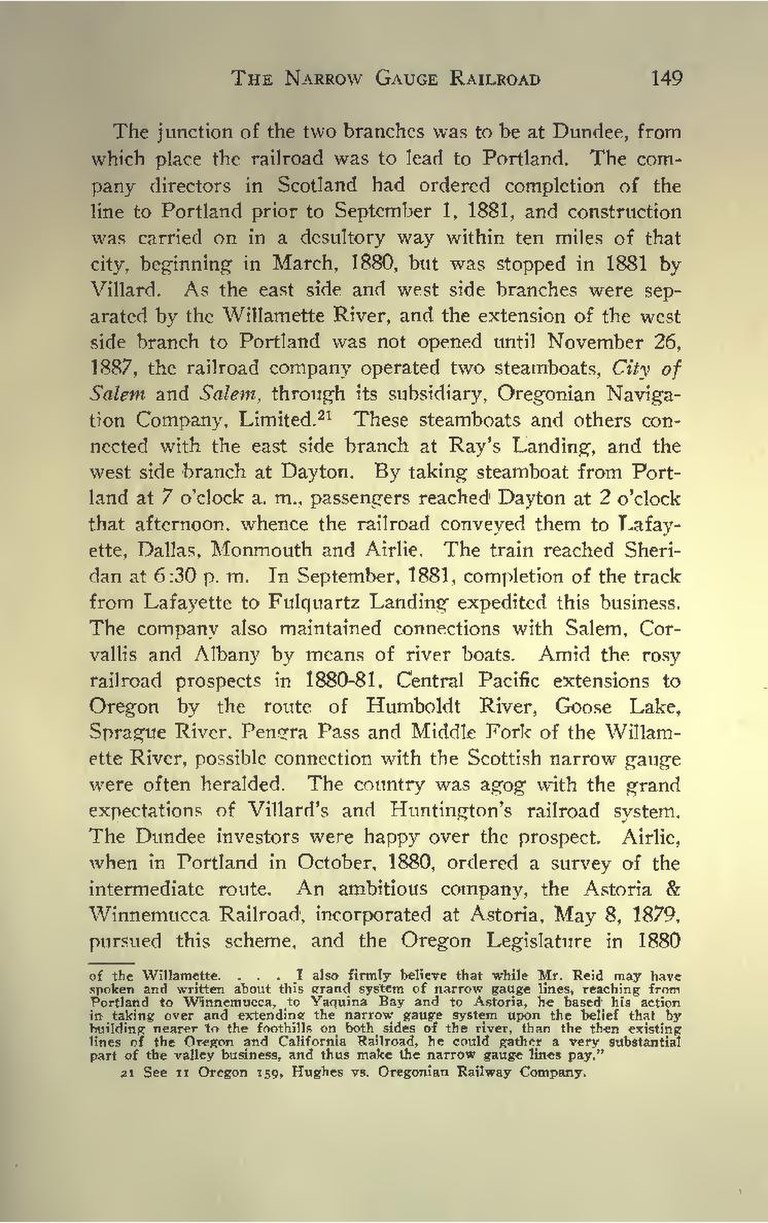The junction of the two branches was to be at Dundee, from which place the railroad was to lead to Portland. The company directors in Scotland had ordered completion of the line to Portland prior to September 1, 1881, and construction was carried on in a desultory way within ten miles of that city, beginning in March, 1880, but was stopped in 1881 by Villard. As the east side and west side branches were separated by the Willamette River, and the extension of the west side branch to Portland was not opened until November 26, 1887, the railroad company operated two steamboats, City of Salem and Salem, through its subsidiary, Oregonian Navigation Company. Limited.[1] These steamboats and others connected with the east side branch at Ray's Landing, and the west side branch at Dayton. By taking steamboat from Portland at 7 o'clock a.m., passengers reached Dayton at 2 o'clock that afternoon, whence the railroad conveyed them to Lafayette, Dallas, Monmouth and Airlie. The train reached Sheridan at 6:30 p. m. In September, 1881, completion of the track from Lafayette to Fulquartz Landing expedited this business. The company also maintained connections with Salem, Corvallis and Albany by means of river boats. Amid the rosy railroad prospects in 1880-81, Central Pacific extensions to Oregon by the route of Humboldt River, Goose Lake, Sprague River, Pengra Pass and Middle Fork of the Willamette River, possible connection with the Scottish narrow gauge were often heralded. The country was agog with the grand expectations of Villard's and Huntington's railroad system. The Dundee investors were happy over the prospect. Airlie, when in Portland in October, 1880, ordered a survey of the intermediate route. An ambitious company, the Astoria & Winnemucca Railroad, incorporated at Astoria, May 8, 1879, pursued this scheme, and the Oregon Legislature in 1880
- ↑ See 11 Oregon 159, Hughes vs. Oregonian Railway Company.
